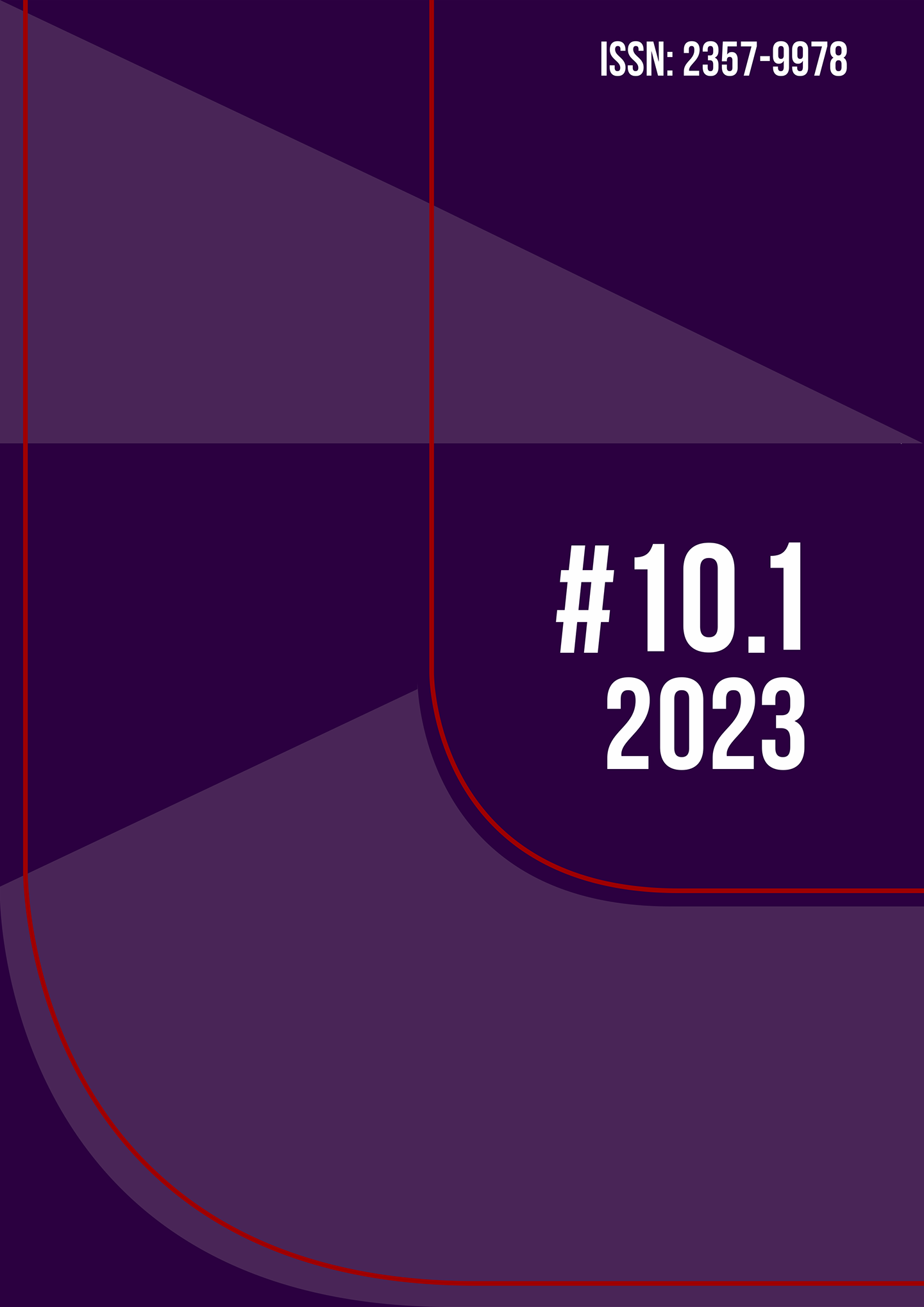Singing and Gesture: Considerations on Vocal Aesthetics in Sacred Medieval Polyphony Performance
DOI:
https://doi.org/10.36025/arj.v10i1.31801Keywords:
Middle Ages, polyphony, oral tradition, early music, voiceAbstract
The early music movement is mainly based on the analysis of documentary records from the past (scores, treatises, historical accounts, etc.). However, the gaps caused by the lack of continuity of an oral tradition remain – after all, not all elements of the performance are contained in the scores. Therefore, to fill these gaps, the performer of the present needs to make certain decisions – not always according to the most objective criteria. The article discusses some of the decisions of historically informed musicians regarding the vocal technique used to perform medieval polyphony nowadays, and proposes a new hypothesis in this regard, with the help of iconography and the popular repertoire of oral tradition.
Downloads
References
BACHMANN, Werner. Probleme musikikonographischer Forschung und der Edition von Bildquellen. In: HEARTZ, Daniel; WADE, Bonnie (org.). International Musicological Society: report of the Twelft Congress, Berkeley, 1977. Kassel: 1981, p. 825-827.
BENT, Margareth. Impossible Authenticities. Il Saggiatore Musicale, v. 8, n. 1, p. 39-50, 2001.
BERTHOLD, Dana. Tidy Whiteness: A Genealogy of Race, Purity and Higiene. Ethics and Environment, v. 15, n. 1, p. 1-26, 2010.
CARR, Edward H. O que é história? Rio de Janeiro: Paz e Terra, 1996.
DELL, Helen. “[A] single, true, certain authenticity”: The authenticity wars in English twentieth-century folk and medieval music revivals. Postmedieval: a journal of medieval cultural studies, v.10, p. 439-451, 2019.
GALLO, Pierluigi. Il ‘Miserere’ polivocale di Sessa Aurunca. In: ARCANGELI, Piero (org.). Musica e liturgia nella Cultura Mediterranea, Quaderni della Rivista Italiana di Musicologia, v. 20, 1988, p. 69-94.
GREIG, Donald. Sight-Readings: notes on a cappella Performance Practice. Early Music, v. 23, n. 1, p. 125-148, 1995.
HAINES, John. The Arabic Style of Performing Medieval Music. Early Music, v. 29, n. 3, p. 369-378, 2001.
HAYNES, Bruce. The End of Early Music: A Period Performer’s History of Music for the Twenty-First Century. Oxford: Oxford University Press, 2007.
HUGHES, Andrew. Charlemagne’s Chant or The Great Vocal Shift. Speculum, v. 77, p. 1069-1106, 2002.
JACKSON, Roland. Performance Practice: A Dictionary-Guide for Musicians. New York: Routledge, 2005.
KIRKMAN, Andrew. Early Polyphony Masses. Early Music, v. 25, n. 2, p. 321-322, 1997.
KOZINN, Allan. Machaut: Motets. New York Times, June 13, 2004, p. AR38. Disponível em: https://www.nytimes.com/2004/06/13/arts/recordings-how-to-keep-the-grit-in-earthy-music-903485.html. Acesso em: 12 jun. 2022.
KUIJKEN, Barthold. The Notation is Not the Music: Reflections on Early Music Practice and Performance. Bloomington: Indiana University Press, 2013.
LACAVALERIE, Xavier; PÉRÈS, Marcel. Le Chant de la mémoire: Ensemble Organum (1982-2002), Paris : Desclée de Brouwer, 2002.
LEYDI, Roberto. Canti popolari italiani. Milano: Mondadori, 1973.
MARCHESIN, Isabelle. L’Image organum: la représentation de la musique dans les psautiers médiévaux 800-1200. Turnhout: Brepols Publishers, 2000.
MARINI, Giovanna. Quattro riflessioni sul canto popolare. Forum Italicum, v. 49, n. 2, p. 624-637, 2015.
MARSHALL, Melanie. Voce Bianca: Purity and Whiteness in British Early Music. Women and Music: A Journal of Gender and Culture, v. 19, p. 36-44, 2015.
McKINNON, James. Iconography. In: HOLOMAN, D. Kern; PALISCA, Claude V. (org.). Musicology in the 80s: Methods, Goals, Opportunities. New York: Da Capo Press, 1982, p. 79-93.
MEYER, Christian. Polyphonies médiévales et tradition orale. Cahiers d’ethnomusicologie, v. 6, p. 99-117, 1993.
MICHAEL, Michael A..The Harnhulle Psalter-Hours: An Early Fourteenth-Century English Illuminated Manuscript at Downside Abbey. Journal of the British Archaeological Association, v. 135, n. 1, p. 81-99, 1981.
PAGE, Christopher. An English motet of the 14th century in performance: two contemporary images. Early Music, v. 25, p. 7-32, 1997.
PAGE, Christopher. The English a cappella renaissance. Early Music, v. 21, p. 453-471, 1993.
PAGE, Christopher. The performance of Ars Antiqua motets. Early Music, v. 16, n. 2, p. 147-164, 1988.
PARK, David. A new interpretation of a Magi scene on a Romanesque ivory comb. Journal of the British Archaeological Association, v. 134, p. 29-30, 1981.
PEARSALL, Derek; SCOTT, Kathleen. Piers Plowman: a facsimile of Bodleian Library, Oxford, MS Douce 104. Cambridge: D. S. Brewer, 1992.
PÉRÈS, Marcel. L’interprétation des polyphonies vocales du XIIe s. et les limites de la paléographie et de la sémiologie. Actes des journées musicologiques de Poitiers. 9-10 mai 1986. Cahiers de civilisation médiévale: La notation des musiques polyphoniques au Xie-XIIIe siècles, n. 122, p. 169-178, 1988.
PLANCHART, Alejandro Enrique, The Performance of Early Music in America. The Journal of Musicology, v. 1, p. 19-28, 1982.
RICCI, Antonello. Quelques aspects du chant polyphonique traditionnel en Calabre. Cahiers d’ethnomusicologie, v. 6, p. 87-98, 1993.
ROKSETH, Yvonne. Polyphonies du XIIIe siècle: Le manuscrit H 196 de la Faculté de Médecine de Montpellier. Tome IV: Études et commentaires. Paris: Éditions de L’Oyseau-Lyre,1939.
SACHS, Curt. Primitive and Medieval Music: A Parallel. Journal of the American Musicological Society, v. 13, p. 43-49, 1960.
SALMEN, Walter. The Value of Iconographical Sources in Musical Research. In: OLLESON, Edward (org.). Modern Musical Scholarship. Oxford: Oriel Press,1980, p. 206-214.
SHERMAN, Bernard D. Inside Early Music: Conversations with Performers. Oxford: Oxford University Press, 1997.
TARUSKIN, Richard. The Authenticity Movement Can Become a Positivistic Purgatory, Literalistic and Dehumanizing. Early Music, v. 12, n. 1, p. 3-12, 1984.
TARUSKIN, Richard. The Pastness of the Present and the Presence of the Past. In: KENYON, Nicholas (org.). Anthenticity and Early Music: a Symposium. Oxford: Oxford University Press, 1988, p. 137-210.
WINTERNITZ, Emanuel. The Visual Arts as a source for the Historian of Music. In: Musical Instruments and Their Symbolism in Western Art. London: Faber and Faber, 1967, p. 25-42
YRI, Kirsten. Performing Machaut’s Messe de Notre Dame: From Modernist Allegiances to the Postmodern Hinterland. In: McGRADY, Deborah; BAIN Jennifer (org.). A Companion to Guillaume de Machaut. Leiden: Brill, 2012, p. 333-359.
Downloads
Published
Versions
- 25-05-2023 (2)
- 17-05-2023 (1)
How to Cite
Issue
Section
License
Copyright (c) 2023 Daniel Issa Gonçalves (Autor)

This work is licensed under a Creative Commons Attribution-NonCommercial-ShareAlike 4.0 International License.

This work is licensed under a Attribution-NonCommercial-ShareAlike 4.0 International (CC BY-NC-SA 4.0) License.
Authors retain copyright, while licensing their work under a Attribution-NonCommercial-ShareAlike 4.0 International (CC BY-NC-SA 4.0) License.


 English
English Português (Brasil)
Português (Brasil)
